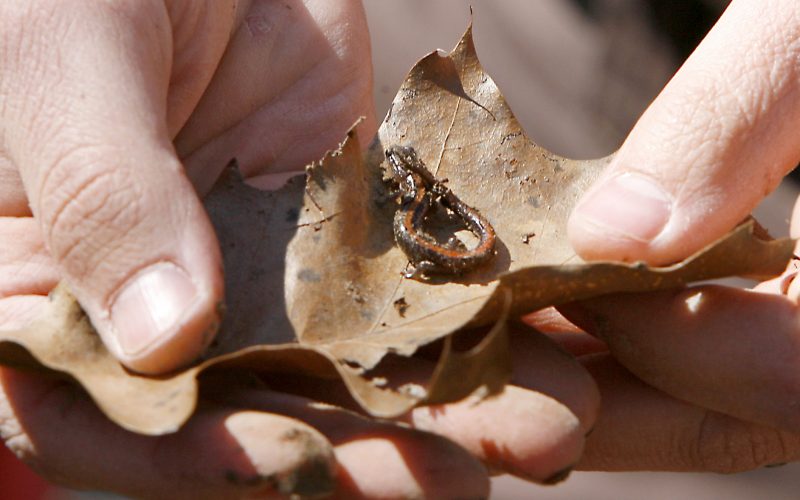Love blooms in early spring for Arkansas species
AMANDA BANCROFT
Making Ripples
On a rainy night at just the right time between winter and spring, Spotted Salamanders emerge from their underground shelters where they spend most of their lives. Hundreds to thousands of these black, yellow-spotted amphibians travel to vernal pools in forests. They can’t breed in permanent ponds with fish, because their offspring will be eaten. So they utilize water sources that will dry up later in the year. In their hunt to find this perfect place to breed, humans can occasionally get a glimpse of the secret life of salamanders.
Spotted salamanders breed from January to March across the state. According to “Herps of Arkansas,” we have a total of 32 species of salamanders in the state, including the Ouachita Streambed Salamander discovered in 2017 by University of Tulsa researchers and the Arkansas Game and Fish Commission. The list keeps growing, and Northwest Arkansas is host to at least 17 of those species. Salamanders are important water quality indicators, making it even more important to protect them and the streams they live in.
The Arkansas Game and Fish Commission reported last September that the endangered Ozark Hellbender was getting a boost from the release of over 100 captive-bred individuals brought from the St. Louis Zoo. These salamanders were released in the Eleven Point River, where they’re hanging on but struggling from threats such as sedimentation, worsening water quality and the Chytrid fungus. This disease has led to declines and extinctions in many amphibians worldwide. Ozark Hellbenders take five to eight years to reach sexual maturity and live 25 to 30 years in the wild. Their long lifespan is one reason scientists didn’t notice the declining population, explains the U.S. Fish and Wildlife Service, and now there is an alarming absence of juveniles in some populations, showing that there hasn’t been successful reproduction in the wild “in several years.” It’s estimated that there are only 590 individuals left in the wild. But there’s hope that watershed preservation and captive-bred releases may still be enough to save them from extinction.
It would be sad to lose a species that’s been around since the end of the age of the dinosaurs, or about 65 million years, according to herpetologist Kelly Irwin. Wikipedia provides a few interesting adaptations which have helped these creatures survive as long as they have. “Although their eyesight is relatively poor, they have light-sensitive cells all over their bodies. Those on their tails are especially finely tuned and may help them position safely under rocks without their tails poking out to give themselves away.” They’re flat for streamlined swimming in fast-slowing water, have an excellent sense of smell to hunt for dead fish, and they also have a lateral line along their bodies which detects vibrations of prey like crawfish. We have many more salamander secrets to learn. If you want to observe them in person, start with a rainy night when the temperature is about 50 degrees Fahrenheit. Happy salamander spotting!
Amanda Bancroft is a writer, artist, and naturalist building an off-grid cottage for land conservation on Mt. Kessler. She and her husband Ryan blog about their adventures and offer a solar-hosted online educational center on how to make a difference with everyday choices at www.RipplesBlog.org.










